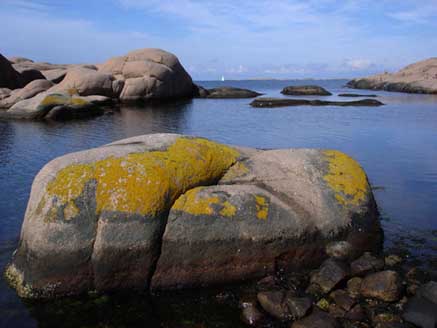| Rock
shores and the beach zone
at Stångehuvud |
|
|
The granite landscape of
Stångehuvud switches in many places to rocky shores that drop more or less steeply into the sea. One example is the beaches at
Kramkistan and Kramkistesund (photo to the right).
|
|
|
Above the black belt
the granite is usually completely bare. There are no species that have managed to colonize this vulnerable environment. Higher up
there is a zonation of different kinds of crust and leaves lichens. A lichen of typical yellow-orange color is often one of the more prominent, especially where the rocks are exposed to bird droppings. Several grayish lichen can be found higher up from the
shore. Read more about algae in the beach zone In
the accumulations of dead seaweed at the rock and boulder beaches, one can find talitridae, a species belonging to the crustaceans.
If you lift the seaweed washed up on the shore, there are often a large amount
of talitridae who immediately starts to move. Talitridae are about 1-2 cm long,
have a gray-black skin and can jump almost a meter!
They can achieve this by folding their tail under themselves and then
scraping with it against the ground.
|
|
